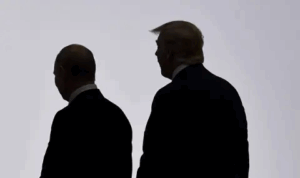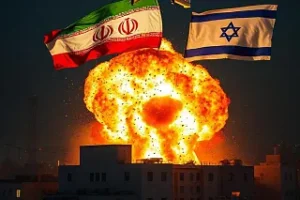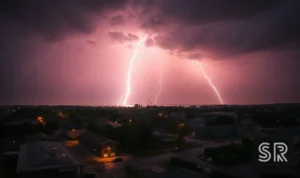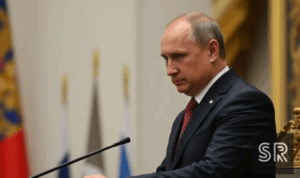Trump Route” Seizes Zangezur Corridor – Russia Faces Strategic Retreat

Trump Route” Seizes Zangezur Corridor – Russia Faces Strategic Retreat as U.S. and Turkey Reshape Caucasus, China and Moscow Weigh Countermeasures
Moscow/Beijing. A seismic shift is unfolding in the South Caucasus. In a dramatic development announced from Washington, U.S. President Donald Trump has unveiled the “Trump Route for Peace and Prosperity” (TRIPP) a sweeping 99-year agreement placing the Zangezur Corridor under American administrative control. The corridor, a strategic land bridge connecting mainland Azerbaijan with its exclave of Nakhchivan through southern Armenia, is now poised to become a linchpin of U.S. influence in a region long considered within Russia’s sphere of dominance.
The deal was formalized during a high-profile trilateral summit in Washington, where Armenian Prime Minister Nikol Pashinyan and Azerbaijani President Ilham Aliyev signed a new ceasefire and cooperation framework. Both leaders hailed the agreement as a breakthrough for regional integration, economic revitalization, and peace. Pashinyan emphasized the corridor’s potential to attract billions in U.S.-led investment into Armenia’s southern provinces, while Aliyev praised the project as a long-overdue step toward unblocking regional transport and strengthening Baku’s connectivity with Turkey.
The United States, in parallel, has committed to deepened cooperation with both nations in energy, digital infrastructure, and cross-border trade, signaling a comprehensive pivot toward American stewardship of the region’s future.
Russia’s Geopolitical Setback: A Cascade of Strategic Losses
The Kremlin has responded with growing alarm, viewing the TRIPP initiative not as a peace project, but as a covert strategic encirclement. Russian officials and security analysts warn that the corridor’s transfer to U.S. oversight represents a direct blow to Moscow’s influence in the South Caucasus, a region where Russia has positioned itself as the primary security guarantor since the 2020 Nagorno-Karabakh war.
In a statement from the Ministry of Foreign Affairs, spokesperson Maria Zakharova condemned the agreement as a “unilateral imposition of external control over sovereign Armenian territory,” adding that “the United States is exploiting post-conflict fragility to insert itself into the heart of Eurasia under the guise of economic development.”
Key implications for Russia include:
🔹 Loss of Strategic Leverage: For years, Russia maintained influence over regional transit routes through its partnerships with Armenia and Iran. The Zangezur Corridor, now under U.S. administration, bypasses both, creating a direct link from the Caspian Sea to Turkey, and ultimately to Europe, without Russian involvement. This undermines Moscow’s role as a gatekeeper of north-south and east-west trade.
🔹 Erosion of the “North-South” Transit Corridor: Russia’s flagship International North-South Transport Corridor (INSTC), which links India to Russia via Iran, now faces a powerful competitor. The TRIPP corridor offers a faster, U.S.-secured alternative for cargo moving between Asia and Europe, potentially diverting trade flows away from Russian-controlled routes.
🔹 Military and Security Concerns: Analysts in Moscow fear that American administrative control could pave the way for indirect military presence, whether through private security contractors, surveillance infrastructure, or logistical support for NATO-aligned forces. Given the corridor’s proximity to Iran and within striking distance of Russia’s southern flank, this development is seen as a potential threat to strategic depth.
🔹 Empowerment of Turkey and Pan-Turkic Ambitions: Ankara has openly celebrated the project, viewing it as a vital step toward the realization of a broader Turkic World vision, a pan-Turkic network linking Turkey, Azerbaijan, Central Asia, and potentially parts of Russia’s own Turkic republics. Russian intelligence circles warn that this could fuel separatist sentiments in regions like Tatarstan and Bashkortostan, and embolden Ankara’s influence in post-Soviet space.
🔹 Isolation from the South Caucasus: With Armenia pivoting toward Washington and Baku deepening ties with Turkey and the U.S., Russia risks becoming a sidelined observer in a region it once dominated. The withdrawal of Russian peacekeepers from Nagorno-Karabakh in 2023 now appears as the beginning of a broader retreat.
China’s Perspective: A Wake-Up Call for Beijing
While China has not issued an official response, analysts in Beijing are closely monitoring the implications. The Zangezur corridor’s alignment with Turkey, a nation with significant Uyghur diaspora ties, raises concerns in Xinjiang-sensitive circles. Ankara’s growing influence in the Caucasus could indirectly support narratives that challenge China’s sovereignty claims over its western regions.
Moreover, the corridor threatens to disrupt China’s Belt and Road Initiative (BRI) calculus in Eurasia. If the “Trump Route” becomes the preferred transit path for goods moving from the Persian Gulf and Central Asia to Europe, China’s BRI corridors through Iran and Russia could lose competitiveness.
Possible Countermeasures: A New Axis of Resistance?
In response to this strategic challenge, experts suggest that Russia and China may accelerate efforts to deepen their Eurasian integration agenda, forming a coordinated counterbalance to U.S. inroads. Potential steps include:
- Strengthening the Russia-Iran-Armenia Axis: Moscow and Tehran could fast-track the construction of the Persian Gulf–Black Sea transport corridor, offering an alternative route that bypasses both Turkey and U.S.-controlled zones. Armenia, despite its current tilt toward Washington, may be incentivized through energy discounts, security guarantees, or investment in Syunik’s infrastructure.
- Revitalizing the INSTC with Chinese Investment: Russia and China could jointly upgrade rail and port infrastructure along the North-South corridor, offering faster customs processing, digital tracking, and subsidies to shippers — making it a more attractive option than the TRIPP route.
- Deepening Military and Energy Ties with Central Asia: To prevent further U.S. encroachment, Russia may expand CSTO (Collective Security Treaty Organization) drills in Kyrgyzstan, Tajikistan, and Kazakhstan, while offering discounted gas and security partnerships. China could complement this with expanded BRI projects in the region, tying economies closer to Beijing.
- Diplomatic Offensive in the Global South: Both powers could leverage BRICS+ and the Shanghai Cooperation Organization (SCO) to frame the Zangezur deal as an example of “Western neocolonialism,” rallying support from Global South nations wary of U.S. unilateralism.
- Support for Alternative Armenian Leadership: Should domestic opposition in Armenia grow against the corridor deal, particularly in Syunik, where local populations have protested territorial concessions, Moscow could quietly bolster pro-Russian political factions or civil society groups to challenge Pashinyan’s pro-Western course.
Conclusion: A New Great Game in the Caucasus
The “Trump Route” is more than a transport corridor, it is a geopolitical declaration. By securing long-term control over Zangezur, the United States has inserted a wedge into Russia’s southern frontier, empowered Turkey’s regional ambitions, and challenged the Sino-Russian vision of a multipolar Eurasia.
For Moscow, the message is clear: the post-Soviet space is no longer a backyard, but a contested battlefield of influence. The coming months will test whether Russia and China can respond with unity, innovation, and strategic patience, or whether the South Caucasus becomes the next front in the unraveling of their shared ambitions.
As one Russian foreign policy insider put it: “If we don’t act now, the next corridor they build won’t just bypass us — it will be used to surround us.”











Post Comment